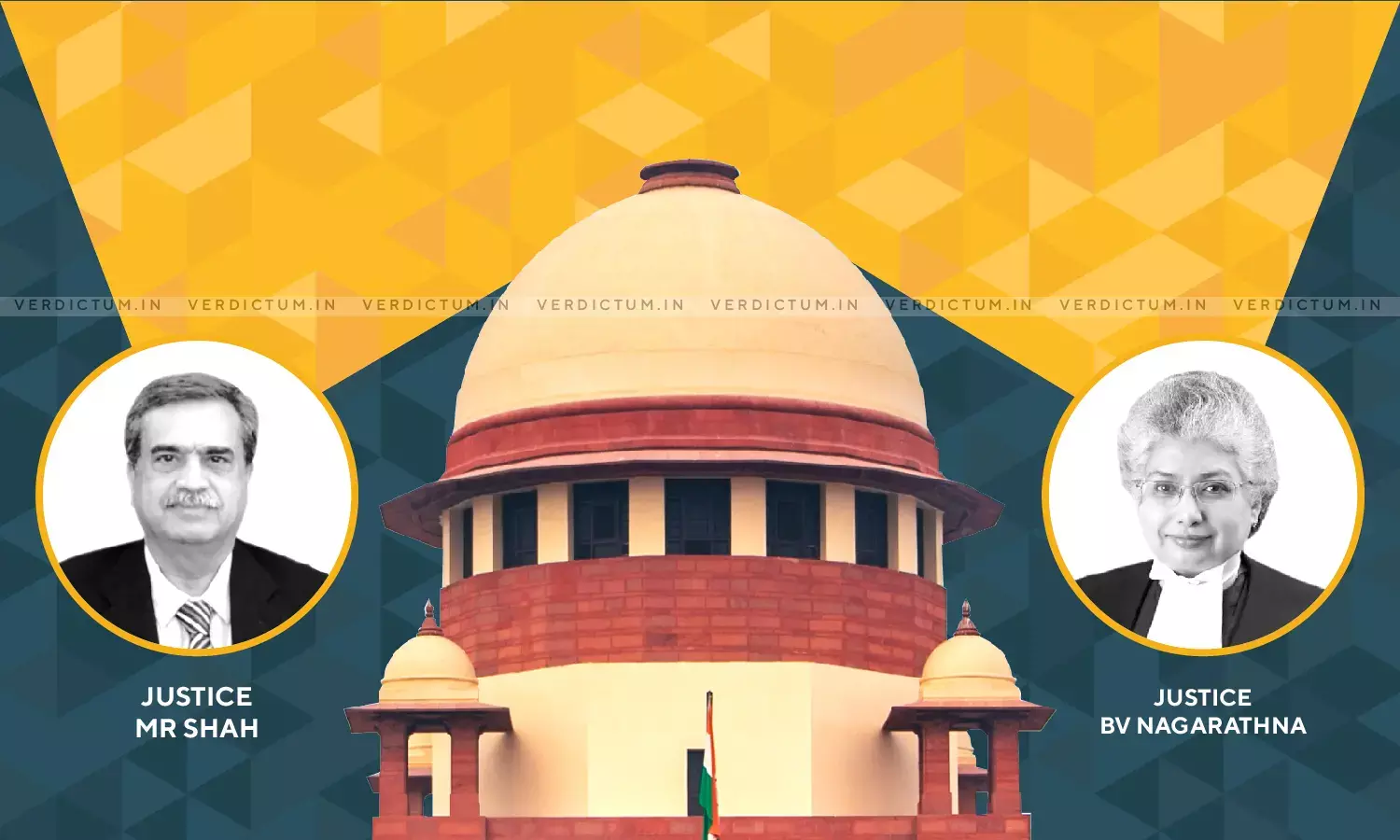Bank Or ARC Taking Action Under SARFAESI Act Are Not Performing Public Function, Writ Petition Not Maintainable: Supreme Court
A two-judge bench of the Supreme Court comprising Justice M.R. Shah and Justice B.V. Nagarathna has held that an aggrieved borrower under the Securitization and Reconstruction of Financial Assets and Enforcement of Securities Interest Act, 2002 ('SARFAESI Act') will have to avail the remedy as per the SARFAESI Act and a writ petition will not be maintainable since the Bank or Assets Reconstruction Company (ARC) are not performing a public function under the SARFAESI Act and also on account of availability of an alternate remedy.
In the present case, the High Court of Karnataka had entertained the petitions filed by the Respondents i.e. the borrowers against the Appellant i.e. an Asset Restructuring Company. The High Court exercised its powers under Article 226 of the Constitution of India and passed an interim order directing maintenance of status quo with respect to the SARFAESI action. The Appellant has challenged the impugned order of the High Court and preferred appeals to the Supreme Court.
Senior Advocate, Mr. V Giri appeared for the Appellant i.e. Phoenix ARC Pvt. Ltd. while Senior Advocate, Mr. Basavaprabhu S Patil appeared for the Respondent before the Apex Court.
The primary question for consideration was as follows –
- Is a writ petition filed by an aggrieved borrower challenging SARFAESI proceedings maintainable?
It was contended by the Appellant that the Writ Petition under Article 226 of the Constitution of India, was not maintainable against a private party and non-State actor like it. It was stated that the only remedy available to the Respondents i.e. the borrowers was by way of an appeal under Section 17 of the SARFAESI Act. Hence, the High Court ought not to have entertained such writ petitions as well as should not have granted interim protection to the borrowers which was extended time and again.
On the other hand, the Respondent claimed that the Appellant was a private body which was performing public functions and hence, a writ was maintainable against them. Additionally, it was contended that the presence of an alternate remedy under the SARFAESI Act did not bar a writ petition. Moreover, it was stated that the Appellant had not performed its statutory duty contravening the Security Interest (Enforcement) Rules, 2002 and had not acted fairly while dealing with the security so as to secure the interest of the borrowers and the public i.e. the depositors at large.
The Supreme Court referring to its decisions in Union Bank of India v. Satyawati Tondon and Kaniyalal Lalchand Sachdev v. State of Maharashtra held that – "ordinarily relief under Articles 226/227 of the Constitution of India is not available if an efficacious alternative remedy is available to any aggrieved person." In the above cases, the Supreme Court had upheld the order of the High Court that had dismissed the writ petition on grounds of an efficacious remedy being available under Section 17 of the SARFAESI Act.
The Court held that, "The ARC as such cannot be said to be performing public functions which are normally expected to be performed by the State authorities. During the course of a commercial transaction and under the contract, the bank/ARC lent the money to the borrowers herein and therefore the said activity of the bank/ARC cannot be said to be as performing a public function which is normally expected to be performed by the State authorities. If proceedings are initiated under the SARFAESI Act and/or any proposed action is to be taken and the borrower is aggrieved by any of the actions of the private bank/bank/ARC, borrower has to avail the remedy under the SARFAESI Act and no writ petition would lie and/or is maintainable and/or entertainable".
The Court also accepted the argument of the Appellant regarding the availability of an alternate remedy to the writ petitioners. The Court held that "filing of the writ petitions by the borrowers before the High Court under Article 226 of the Constitution of India is an abuse of process of the Court. The writ petitions have been filed against the proposed action to be taken under Section 13(4). As observed hereinabove, even assuming that the communication dated 13.08.2015 was a notice under Section 13(4), in that case also, in view of the statutory, efficacious remedy available by way of appeal under Section 17 of the SARFAESI Act, the High Court ought not to have entertained the writ petitions. Even the impugned orders passed by the High Court directing to maintain the status quo with respect to the possession of the secured properties on payment of Rs.1 crore only (in all Rs.3 crores) is absolutely unjustifiable."
The Court also rejected the argument of the Respondents that the Supreme Court should not interfere with interim orders of the High Court when the writ petition was pending before the High Court.
Thus, the Supreme Court dismissed the proceedings before the High Court of Karnataka and vacated the ex-parte ad-interim order, while allowing the appeals. The Court also imposed a cost of Rs. 1 lakh on the Respondents in both the cases.
Click here to read/download the Judgment




